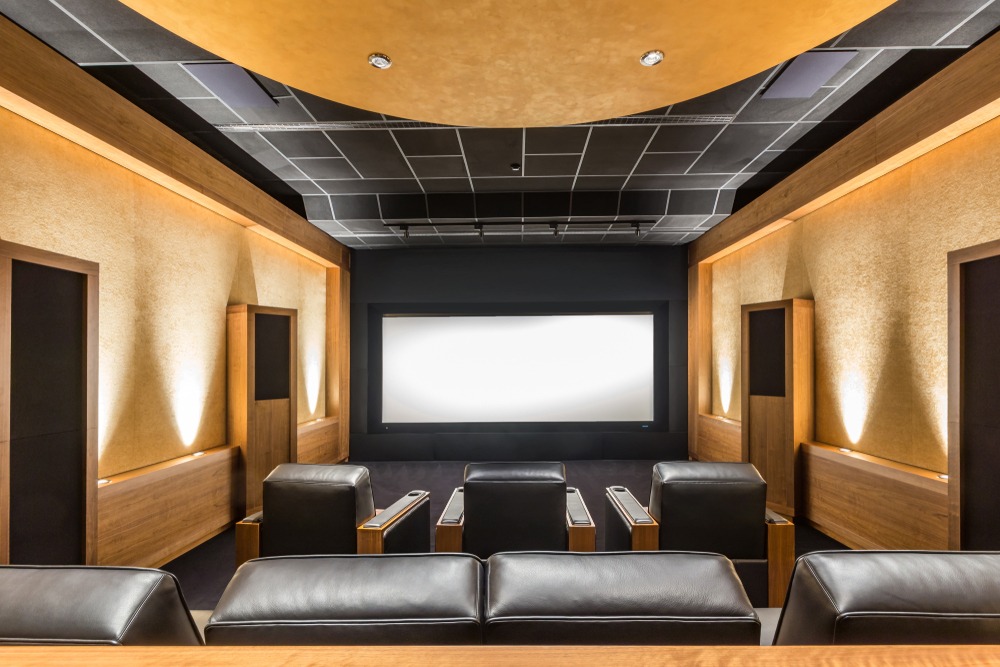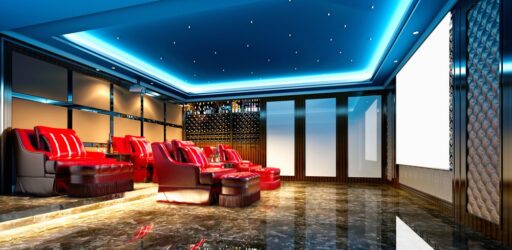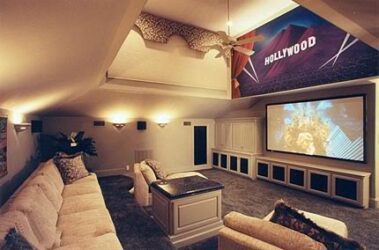Home Theater Setup Guide
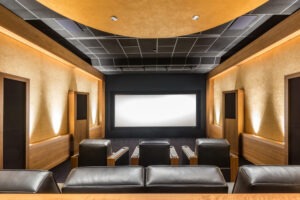 Building a home theater is an enjoyable undertaking that lets you to bring the cinematic experience right into your living space. Whether you’re a movie junkie or an enthusiastic fan of immersive gaming, a well-designed setup can transport you to a world of entertainment and excitement. In this guide, we will look at the required considerations for setting up a system at home to view your favorite movies.
Building a home theater is an enjoyable undertaking that lets you to bring the cinematic experience right into your living space. Whether you’re a movie junkie or an enthusiastic fan of immersive gaming, a well-designed setup can transport you to a world of entertainment and excitement. In this guide, we will look at the required considerations for setting up a system at home to view your favorite movies.
Room Selection and Layout
Choose a dedicated room or area in your residence for your home theater. Think of variables such as space measurements, arrangement, and acoustics. Ideally, the room should be rectangular in shape to optimize sound distribution. Pay attention to potential sound reflections and echo by using acoustic panels or curtains to minimize unwanted noise interference.
Display Options
The centerpiece is the display. You have several options to choose from, including flat-screen TVs and projectors. For a truly cinematic experience, consider a large-screen projector paired with a high-quality projection screen. Ensure that the screen size and placement are suitable for the viewing distance in your room to maintain optimal picture quality.
Audio System
An immersive audio system is essential for a captivating home theater experience. Invest in a surround sound system that includes front, middle and back speakers, as well as a sub woofer for deep bass. Position the speakers strategically to create a balanced audio environment. You can also consider adding height speakers or overhead speakers for a more immersive sound experience with formats like Dolby Atmos.
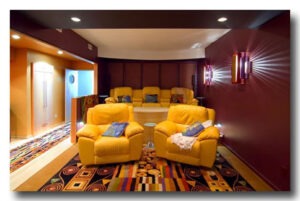 Receiver and Amplifier
Receiver and Amplifier
A receiver serves as the central hub for your system. It gets video and sound via distince sources and distributes them to the appropriate components. Choose a receiver that supports the latest audio and video formats and has sufficient HDMI inputs to accommodate your devices. An amplifier may be necessary to power your speakers and ensure optimal sound quality.
Source Components
Consider the various sources you will connect to your home theater system, such as Blu-ray players, streaming devices, gaming consoles, and media servers. Ensure that your receiver has the necessary inputs and supports the formats you plan to use. Additionally, a universal remote or a smart home integration system can simplify control and operation of multiple devices.
Seating and Comfort
Select comfortable seating options that can accommodate your family or guests. Opt for reclining chairs or a cozy sectional sofa to provide comfort during long movie marathons. Consider the viewing distance from the screen and ensure that everyone has a clear view. If space allows, you can also incorporate additional seating options such as bean bags or a bar area for a complete theater experience.
 Lighting and Ambiance
Lighting and Ambiance
Controlled lighting is essential to create the right atmosphere. Install dimmable lights or consider adding motorized blackout curtains to minimize external light sources and optimize the picture quality. Additionally, decorative lighting options, such as LED strips or fiber optic star ceilings, can enhance the ambiance and create a captivating visual environment.
Room Acoustics
Pay attention to the acoustic properties of your home theater room. Consider using acoustic panels or diffusers to optimize sound reflection and absorption. Carpeting or area rugs can help reduce sound reflections and echo. Experiment with speaker placement and room treatments to achieve the best sound quality.
Connectivity and Streaming
Ensure that your home theater setup has a reliable internet connection to take advantage of streaming services, online content, and firmware updates. Consider using wired connections for devices that require stable connections, such as your media server or gaming console. Wi-Fi extenders or mesh network systems can help eliminate dead spots and ensure consistent connectivity.
Calibration and Fine-tuning
After set up calibrate and fine-tune the audio and video settings to achieve optimal performance. Use calibration tools or hire a professional to adjust the audio levels, speaker distances, and video settings to match the capabilities of your room and components. This step ensures accurate sound reproduction and picture quality, enhancing your overall viewing experience.
 Creating a home theater is a rewarding project that allows you to enjoy a personalized cinematic experience within the comfort of your own home. By taking careful consideration of the display options, audio system, seating, lighting, and connectivity, you can design a setup that delivers immersive audiovisual enjoyment. Remember to pay attention to room acoustics, calibration, and to improve the fine-tuning to optimize the functionality of your system. You can indulge in the magic of movies, gaming, and multimedia content, creating memorable entertainment experiences for yourself, your family, and your friends.
Creating a home theater is a rewarding project that allows you to enjoy a personalized cinematic experience within the comfort of your own home. By taking careful consideration of the display options, audio system, seating, lighting, and connectivity, you can design a setup that delivers immersive audiovisual enjoyment. Remember to pay attention to room acoustics, calibration, and to improve the fine-tuning to optimize the functionality of your system. You can indulge in the magic of movies, gaming, and multimedia content, creating memorable entertainment experiences for yourself, your family, and your friends.



